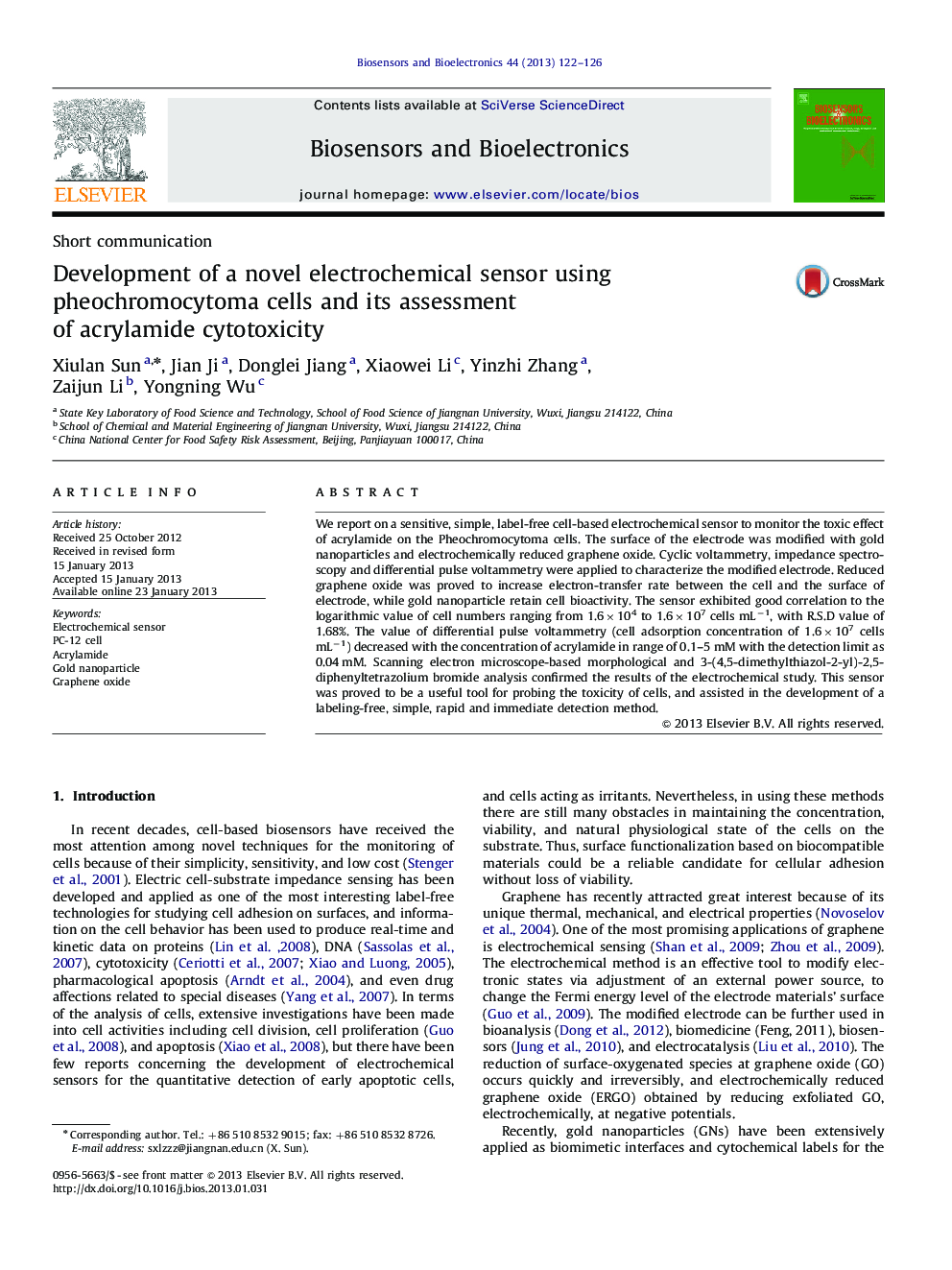| Article ID | Journal | Published Year | Pages | File Type |
|---|---|---|---|---|
| 866925 | Biosensors and Bioelectronics | 2013 | 5 Pages |
We report on a sensitive, simple, label-free cell-based electrochemical sensor to monitor the toxic effect of acrylamide on the Pheochromocytoma cells. The surface of the electrode was modified with gold nanoparticles and electrochemically reduced graphene oxide. Cyclic voltammetry, impedance spectroscopy and differential pulse voltammetry were applied to characterize the modified electrode. Reduced graphene oxide was proved to increase electron-transfer rate between the cell and the surface of electrode, while gold nanoparticle retain cell bioactivity. The sensor exhibited good correlation to the logarithmic value of cell numbers ranging from 1.6×104 to 1.6×107 cells mL−1, with R.S.D value of 1.68%. The value of differential pulse voltammetry (cell adsorption concentration of 1.6×107 cells mL−1) decreased with the concentration of acrylamide in range of 0.1–5 mM with the detection limit as 0.04 mM. Scanning electron microscope-based morphological and 3-(4,5-dimethylthiazol-2-yl)-2,5-diphenyltetrazolium bromide analysis confirmed the results of the electrochemical study. This sensor was proved to be a useful tool for probing the toxicity of cells, and assisted in the development of a labeling-free, simple, rapid and immediate detection method.
► A novel living cell-based electrochemical sensor was fabricated. ► Graphene–gold nanocomposite as signal amplification was used for living cell immobilization. ► The electrochemical sensor was successfully used for monitoring toxic effects of acrylamide on PC-12 cells.
